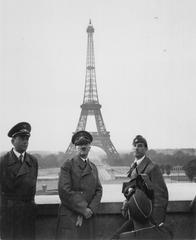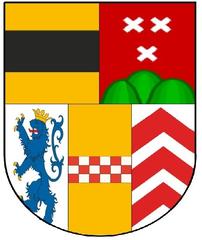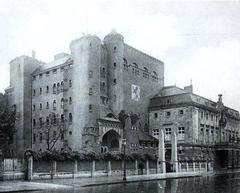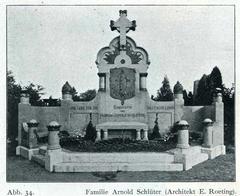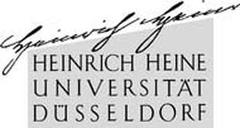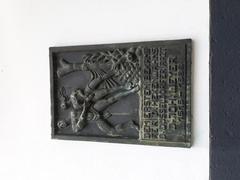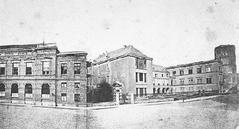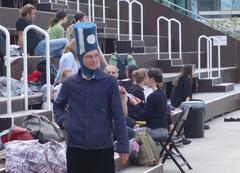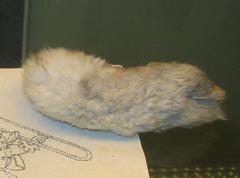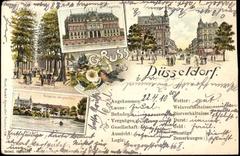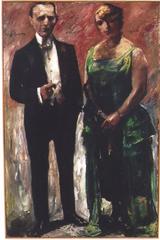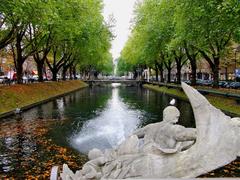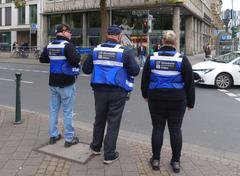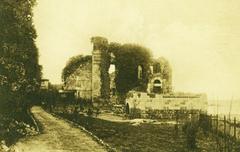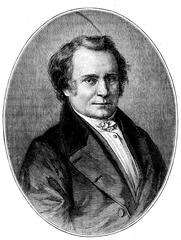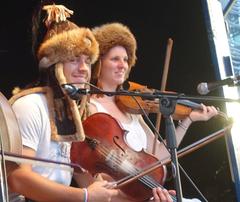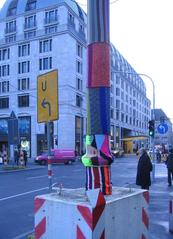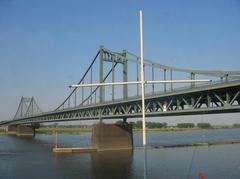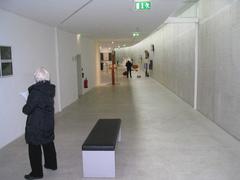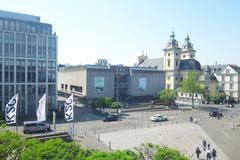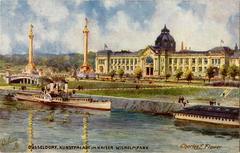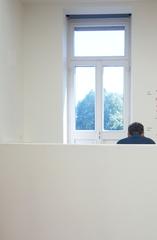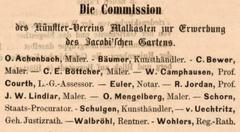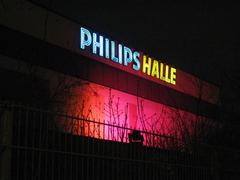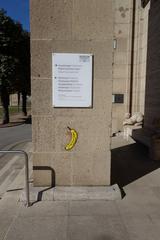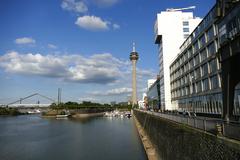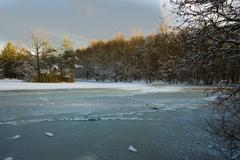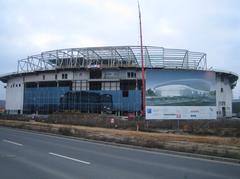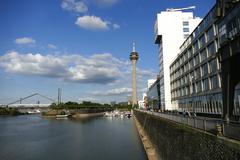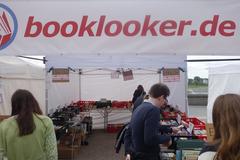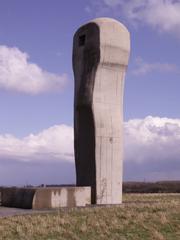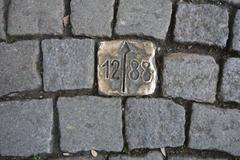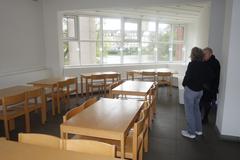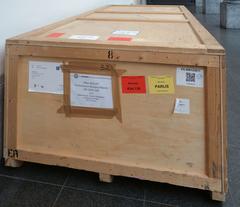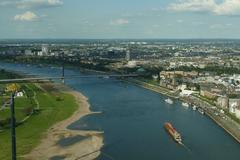
{‘date’: ‘04/07/2025’, ‘task’: {‘model’: ‘gpt-4.1-mini’, ‘query’: ‘Comprehensive guide to visiting Alte Kunsthalle, Düsseldorf, Germany: history, significance, visitor tips, and everything tourists need to know for a memorable experience.’, ‘verbose’: False, ‘guidelines’: [“Keyword Research: Identify relevant keywords that potential visitors are likely to search for, such as ‘[Monument Name] visiting hours,’ ‘[Monument Name] tickets,’ and ‘[City] historical sites.’ Use these keywords strategically throughout the article, including in the title, headers, and body text, but avoid keyword stuffing.”, ‘Engaging and Informative Title: Craft a title that is both SEO-friendly and compelling to encourage clicks. Include the main keyword and make it clear what the article will cover.’, ‘Structured Content: Use headings (H1, H2, H3) to organize the content effectively. This helps with SEO and makes the article easier for readers to navigate. Include an introduction that hooks the reader, a detailed body that covers all relevant aspects, and a conclusion that summarizes the key points.’, ‘Comprehensive Coverage: Address common questions and topics of interest such as the history of the monument, its cultural significance, visitor information (e.g., ticket prices, opening hours), travel tips, nearby attractions, and accessibility. Include sections that might be unique to the monument, like special events, guided tours, and photographic spots.’, ‘Quality Content: Ensure the content is well-researched, accurate, and provides real value to readers. Use reliable sources and provide factual information. Write in a clear, engaging, and accessible style. Consider your audience and use language that is appropriate for those likely to visit the monument.’, ‘Visuals and Media: Incorporate high-quality images or videos of the monument. These should be optimized for the web (correct sizing, alt tags with keywords). Consider interactive elements like virtual tours or maps.’, ‘Internal and External Links: Include links to other related articles on your site to encourage deeper engagement (internal links). Link to official websites for the monument or credible sources for further reading (external links).’, ‘FAQ: Incorporate FAQ sections to target voice search queries and featured snippets’, ‘Visit and Stay Up to Date: End the article with a call to action, such as encouraging readers to download our mobile app Audiala, check out other related posts, or follow on social media for more updates.’], ‘max_sections’: 4, ‘publish_formats’: {‘pdf’: False, ‘docx’: False, ‘markdown’: True}, ‘follow_guidelines’: True}, ‘title’: ‘A Comprehensive Guide to Visiting the Alte Kunsthalle (Kunsthalle Düsseldorf), Düsseldorf, Germany’, ‘report’: ’# Alte Kunsthalle Düsseldorf: Visiting Hours, Tickets, and Comprehensive Guide to Düsseldorf’s Historical Art Landmark\n\n#### Date: 04/07/2025\n\n---\n\n## Introduction\n\nThe Kunsthalle Düsseldorf—formerly known as the Alte Kunsthalle—is a central fixture in Düsseldorf’s Altstadt, renowned for its Brutalist architecture, ever-evolving contemporary art exhibitions, and pivotal role in Germany’s cultural landscape. Standing on Grabbeplatz, the Kunsthalle bridges the city’s rich artistic tradition with the forefront of international and local art, making it an essential destination for anyone interested in art and history. This guide provides detailed insights into the Kunsthalle’s history, visitor information, accessibility, ongoing exhibitions, and its position among Düsseldorf’s historical sites.\n\nFor the latest visiting hours, tickets, and event details, consult the official Kunsthalle Düsseldorf website, Visit Düsseldorf, and Art DUS.\n\n---\n\n## Table of Contents\n\n- History and Evolution\n- Architectural and Cultural Significance\n- Visiting Hours and Ticket Information\n- Location and Accessibility\n- Current and Upcoming Exhibitions (2025)\n- Visitor Experience, Amenities, and Tips\n- Nearby Attractions and Düsseldorf Historical Sites\n- FAQ\n- Conclusion and Visitor Advice\n- References\n\n---\n\n## History and Evolution\n\n### Early Foundations: The Original Alte Kunsthalle (1881–1967)\n\nBuilt between 1878 and 1881, the original Alte Kunsthalle was situated on what is now Grabbeplatz, formerly Friedrichsplatz, a former parade ground for the Düsseldorf garrison (de.wikipedia.org). Its stately façade, adorned with Karyatiden sculptures by Wilhelm Albermann and Karl Hilgers, established it as a central venue for local and international art. The building survived World War II with minimal damage and continued to serve as a cultural hub during the postwar years (kuladig.de).\n\n### Mid-20th Century: Artistic Influence Amid Change\n\nDuring the 1930s, under painter Fred Kocks and the influence of National Socialist cultural policies, the Kunsthalle’s exhibition program evolved. Important exhibitions such as Hans Wilhelm Hupp’s “Galerie der Neuzeit” and the 1958 Dada retrospective maintained the institution’s reputation for progressive art (de.wikipedia.org).\n\n### Demolition and the New Kunsthalle (1967)\n\nIn 1967, the original Alte Kunsthalle was demolished, making way for a new Brutalist structure designed by Konrad Beckmann and Brockes. The resulting building, nicknamed the “Kunstbunker” for its windowless concrete design, prioritized flexibility for contemporary exhibitions and housed the Kunstverein für die Rheinlande und Westfalen on its upper level (visitduesseldorf.de, art-dus.de).\n\n### International Impact and Pioneering Exhibitions\n\nBetween 1968 and the 1990s, the Kunsthalle gained international renown through the “Prospect” exhibition series, introducing avant-garde and experimental art to Europe and cementing Düsseldorf’s status as a contemporary art center (en.wikipedia.org).\n\n### Modernization and Preservation\n\nExtensive renovations in the late 1990s and early 2000s preserved the building’s Brutalist character while enhancing its gallery spaces and visitor amenities (en.wikipedia.org).\n\n### Contemporary Role\n\nUnder current leadership, the Kunsthalle continues to present a vibrant program of exhibitions, supporting both emerging and established artists. Its lack of a permanent collection allows for a dynamic and responsive curatorial approach (art-dus.de).\n\n---\n\n## Architectural and Cultural Significance\n\nThe Kunsthalle Düsseldorf’s architecture is a hallmark of post-war Brutalism, distinguished by prefabricated concrete blocks and a fortress-like façade that contrasts with the historic Altstadt surroundings (Lonely Planet). The interior offers open-plan galleries with ample natural light, providing an adaptable setting for experimental art installations (Kunsthalle Düsseldorf Information).\n\nA notable feature is Joseph Beuys’ “Das Schwarze Loch” (The Black Hole), a black stove pipe installed in 1981, which commemorates Düsseldorf’s avant-garde legacy (visitduesseldorf.de).\n\nThe Kunsthalle’s integration into Grabbeplatz, opposite the Kunstsammlung K20, places it at the heart of Düsseldorf’s cultural district and makes it easily accessible to visitors exploring the city’s artistic heritage (TravelWiseWay).\n\n---\n\n## Visiting Hours and Ticket Information\n\n- Opening Hours: \n - Tuesday – Sunday: 11:00 AM – 6:00 PM \n - Closed on Mondays and select public holidays \n - Check the official website for seasonal variations and special events.\n\n- Ticket Prices (2025): \n - General admission: €7–€10 (depending on exhibition) \n - Reduced (students, seniors, disabled): €4–€6 \n - Children under 18: Free \n - Groups (10+): Discounted rates \n - Special Free Entry Days: \n - Every second Sunday: Family Day with free admission \n - Last Thursday of each month (“Langer Donnerstag”): Free entry 6:00 PM–9:00 PM\n\n- Tickets: \n - Purchase online in advance or at the entrance \n - Verify details for special exhibitions as pricing and policies may vary\n\n---\n\n## Location and Accessibility\n\n- Address: \n Grabbeplatz 4, 40213 Düsseldorf, Germany\n\n- Getting There: \n - Public transport: U-Bahn lines U70, U74, U75, U76, U77, U78, U79 to “Heinrich-Heine-Allee” station. \n - Parking: Limited underground parking at Kunsthalle (access via Neustr./Mutter-Ey-Str.); nearby public parking garages such as “Kunstsammlung” and “Grabbeplatz.” \n - Bicycle: Bike racks are available near the entrance. \n - Walking: The Altstadt is pedestrian-friendly and easily navigable.\n\n- Accessibility: \n - The main entrance is at street level; elevators and accessible restrooms are available. \n - Some architectural barriers remain, but comprehensive renovations are planned for 2026 to further improve inclusivity (Kunsthalle Düsseldorf Accessibility). \n - Disabled parking is available; staff can assist visitors with special needs.\n\n---\n\n## Current and Upcoming Exhibitions (2025)\n\n- Artists of the VdDK 1844: “…and we’re just getting started” \n Until May 25, 2025: Around 250 contemporary works by Düsseldorf’s historic Artists’ Association, featuring painting, sculpture, photography, and media art (visitduesseldorf.de).\n\n- Bernd and Hilla Becher Prize 2025: Ursula Schulz-Dornburg & Farah Al Qasimi \n June 7 – September 7, 2025: Celebrating contemporary photography and visual art.\n\n- Wang Bing: The Weight of the Invisible \n Throughout 2025: Solo exhibition by the acclaimed Chinese filmmaker and artist (trip.com).\n\nCheck the Kunsthalle Düsseldorf exhibition calendar for updates.\n\n---\n\n## Visitor Experience, Amenities, and Tips\n\n### Museum Facilities\n\n- Cloakroom and Lockers: \n Secure storage for coats, bags, and umbrellas. Large bags are not permitted in exhibition spaces.\n\n- Restrooms: \n Accessible restrooms, including facilities for visitors with disabilities, are on the ground floor.\n\n- Museum Shop: \n Offers art books, exhibition catalogues, postcards, and unique design objects.\n\n- Café and Dining: \n The Kunsthalle hosts the “Salon des Amateurs,” a notable venue for electronic music. Numerous cafés and restaurants are within walking distance in the Altstadt (visitduesseldorf.de).\n\n### Guided Tours and Educational Programs\n\n- Regular guided tours (primarily in German), with English tours on request \n- Educational workshops for schools, families, and groups \n- Special events, artist talks, and panel discussions throughout the year \n- Family-friendly programming and creative workshops on Family Day\n\n### Photography Policy\n\n- Photography allowed in most areas (excluding flash and tripods) \n- Restrictions may apply for certain exhibitions; check signage or ask staff\n\n### Visitor Tips\n\n- Plan your visit: Check for special offers, events, and free entry days \n- Avoid crowds: Weekday mornings and late afternoons tend to be quieter \n- Family-friendly: Strollers permitted; baby-changing facilities available \n- Accessibility: Contact the museum in advance for specific needs\n\n---\n\n## Nearby Attractions and Düsseldorf Historical Sites\n\n- Kunstsammlung K20: Major 20th-century art collection, directly opposite the Kunsthalle\n- Altstadt (Old Town): Lively historical district with traditional breweries and cobblestone streets\n- Rheinuferpromenade: Scenic riverwalk along the Rhine\n- St. Lambertus Church and Schlossturm: Iconic city landmarks within walking distance\n\nDiscover more on Düsseldorf’s cultural guide and nrw-tourismus.de.\n\n---\n\n## FAQ\n\nQ: What are the Kunsthalle Düsseldorf visiting hours? \nA: Tuesday to Sunday, 11:00 AM–6:00 PM; closed on Mondays.\n\nQ: How much are tickets? \nA: €7–€10 for adults, reduced rates for students and seniors, free for under 18s; special offers on Family Day and “Langer Donnerstag.”\n\nQ: Is the Kunsthalle accessible for visitors with disabilities? \nA: Yes; main entrance, elevators, and accessible restrooms are available. Major renovations to enhance accessibility begin in 2026.\n\nQ: Are guided tours available? \nA: Yes, including tours in German Sign Language and English (on request).\n\nQ: Can I buy tickets online? \nA: Yes, advance online purchase is recommended, especially for major exhibitions.\n\nQ: Is photography allowed? \nA: Yes, but without flash or tripods; some exhibitions may have restrictions.\n\n---\n\n## Conclusion and Visitor Advice\n\nThe Kunsthalle Düsseldorf is a dynamic crossroads of history, architecture, and contemporary art. Its central location, proximity to major cultural attractions, and a forward-thinking exhibition program make it an indispensable stop for art lovers and visitors to Düsseldorf. With regular exhibitions, family-friendly events, and ongoing improvements in accessibility, the Kunsthalle welcomes a diverse audience and continues to shape the city’s creative landscape.\n\nPlan ahead: \n- Check current exhibitions and opening hours \n- Take advantage of free entry days \n- Explore nearby historical sites \n- Download the Audiala app for guided tours and real-time updates\n\nStay connected with the Kunsthalle via social media and explore related content on Düsseldorf’s museums and historical sites to enrich your visit.\n\n---\n\n## References\n\n- Kunsthalle Düsseldorf: History, Visitor Information, and Must-See Attractions, 2025\n- Kunsthalle Düsseldorf: Visiting Hours, Tickets, and Architectural & Cultural Highlights, 2025\n- Explore Kunsthalle Düsseldorf: Visiting Hours, Tickets, and Exhibitions Guide 2025\n- Kunsthalle Düsseldorf Visiting Hours, Tickets & Visitor Guide to Düsseldorf Historical Sites, 2025\n- Art DUS: Düsseldorf Museum Guide, 2025\n- Trek.zone: Kunsthalle Düsseldorf Overview, 2025\n- Trip.com: 2025 Düsseldorf Exhibitions Collection\n- TravelWiseWay: Exploring Düsseldorf’s Old Town, 2024\n\n---\n\n’, ‘headers’: {‘date’: ‘Date’, ‘title’: ‘Alte Kunsthalle Düsseldorf Visiting Hours Tickets and Guide to Düsseldorf Historical Sites’, ‘conclusion’: ‘Summary of key points about Alte Kunsthalle Düsseldorf and visitor advice’, ‘references’: ‘References and links to official websites and reliable sources’, ‘introduction’: ‘Introduction to Alte Kunsthalle Düsseldorf and what visitors need to know’, ‘table_of_contents’: ‘Contents covering history cultural significance visitor information travel tips nearby attractions and accessibility’}, ‘sources’: [’- Kunsthalle Düsseldorf: History, Visitor Information, and Must-See Attractions, 2025 https://de.wikipedia.org/wiki/Alte_Kunsthalle_(D%C3%BCsseldorf)’, ’- Kunsthalle Düsseldorf: Visiting Hours, Tickets, and Architectural & Cultural Highlights, 2025 https://www.visitduesseldorf.de/attraktionen/kunsthalle-duesseldorf-ce40a131c6’, ’- Explore Kunsthalle Düsseldorf: Visiting Hours, Tickets, and Exhibitions Guide 2025 https://www.kunsthalle-duesseldorf.de/informationen/’, ’- Kunsthalle Düsseldorf Visiting Hours, Tickets & Visitor Guide to Düsseldorf Historical Sites, 2025 https://www.visitduesseldorf.de/en/attractions/kunsthalle-duesseldorf-ce40a131c6’, ’- Art DUS: Düsseldorf Museum Guide, 2025 https://www.art-dus.de/duesseldorf-museum-guide/’, ’- Trek.zone: Kunsthalle Düsseldorf Overview, 2025 https://trek.zone/en/germany/places/68006/kunsthalle-dusseldorf’, ’- Trip.com: 2025 Düsseldorf Exhibitions Collection https://www.trip.com/events/2109206-2025-dusseldorf-exhibitions-collection/’, ’- TravelWiseWay: Exploring Düsseldorf’s Old Town, 2024 https://www.travelwiseway.com/section-news/news-exploring-dusseldorfs-old-town-a-blend-of-history-culture-and-modern-charm-19-10-2024.html’], ‘sections’: [‘Historical Overview’, ‘Architectural and Cultural Significance’, ‘The Kunsthalle Düsseldorf Today’, ‘Practical Visitor Information’], ‘conclusion’: ‘The Kunsthalle Düsseldorf embodies a vibrant crossroads of history, architecture, and contemporary art within the heart of Düsseldorf’s Altstadt. From its origins as the Alte Kunsthalle in the late 19th century to its current incarnation as a Brutalist icon and dynamic exhibition space, the Kunsthalle continues to shape and reflect the evolving art scene of Germany and beyond. Visitors benefit from its strategic location near prominent cultural institutions, accessible public transport links, and a diverse program that supports both established and emerging artists without the constraints of a permanent collection. With affordable admission, regular guided tours—including sign language options—and family-friendly programming, the Kunsthalle is well-equipped to welcome a diverse spectrum of art lovers.\n\nOngoing and upcoming exhibitions in 2025, such as the VdDK 1844 showcase and the Bernd and Hilla Becher Prize recipients’ displays, highlight the institution’s commitment to contemporary artistic discourse. Planned renovations starting in 2026 promise to enhance accessibility and visitor amenities, ensuring an even more inclusive experience in the future. Visitors are encouraged to plan ahead by consulting the official website for up-to-date visiting hours, ticket information, and special event schedules.\n\nTo fully immerse yourself in Düsseldorf’s rich cultural fabric, combine your Kunsthalle visit with explorations of nearby landmarks like the Kunstsammlung K20, the Altstadt’s historic streets, and the scenic Rheinuferpromenade. Enhance your experience by downloading the Audiala app for curated audio guides and real-time updates. Stay connected with the Kunsthalle Düsseldorf through their social media channels and explore related content on Düsseldorf’s museums and historical sites to maximize your cultural journey. Whether you seek architectural intrigue, provocative contemporary art, or a deeper understanding of Düsseldorf’s artistic heritage, Kunsthalle Düsseldorf offers an inspiring destination that continues to innovate and engage.\n\nFor further details and to plan your visit, refer to the official Kunsthalle Düsseldorf website, Visit Düsseldorf, and Art DUS.’, ‘introduction’: ‘Situated in the heart of Düsseldorf’s historic Altstadt, the Kunsthalle Düsseldorf, formerly known as the Alte Kunsthalle, stands as a pivotal institution for contemporary art in Germany. Renowned for its distinctive Brutalist architecture and dynamic exhibition program, the Kunsthalle offers visitors a unique cultural experience that bridges Düsseldorf’s rich artistic heritage with cutting-edge contemporary practices. Originally constructed between 1878 and 1881, the Alte Kunsthalle was a vital venue showcasing local and international art, before its demolition in 1967 made way for the current Brutalist building designed by Konrad Beckmann and Brockes. This modern structure, affectionately nicknamed the “Kunstbunker,” reflects post-war Germany’s architectural shift towards transparency and functionalism while providing flexible exhibition spaces that host a rotating array of avant-garde and experimental art. \n\nVisitors will find the Kunsthalle easily accessible via public transit to the nearby Heinrich-Heine-Allee station, with close proximity to other cultural landmarks such as the Kunstsammlung Nordrhein-Westfalen (K20) and Düsseldorf’s Altstadt, enriching their art exploration with historical context and urban charm. The institution’s commitment to inclusivity is evident in its wheelchair accessibility and planned renovations aimed at further enhancing visitor experience. Admission is typically free or affordable, with special exhibitions requiring tickets purchasable online or on-site. Regular guided tours, educational workshops, and special events foster engagement with diverse audiences, while photographic opportunities abound—from the striking concrete exterior featuring Joseph Beuys’ iconic “Das Schwarze Loch” stove pipe to the naturally lit, spacious galleries inside.\n\nWhether you are an art aficionado eager to explore international contemporary art or a casual visitor seeking to immerse yourself in Düsseldorf’s cultural landscape, this comprehensive guide to Kunsthalle Düsseldorf visiting hours, tickets, exhibitions, and nearby historical sites will help you plan an enriching visit. For more detailed information, please refer to the official Kunsthalle Düsseldorf website and trusted travel resources such as Visit Düsseldorf and Art DUS.’, ‘research_data’: [{‘Kunsthalle Düsseldorf: History, Visitor Information, and Must-See Attractions’: ’### Introduction\n\nKunsthalle Düsseldorf is a cornerstone of contemporary art in Germany, renowned for its dynamic exhibitions and distinctive Brutalist architecture. This article offers a comprehensive overview of the Kunsthalle Düsseldorf’s rich history, cultural significance, and practical visitor information, including visiting hours, ticketing, accessibility, and nearby attractions. Whether you are an art enthusiast or a casual visitor exploring Düsseldorf historical sites, this guide will help you make the most of your visit.\n\n### Early Foundations and the Original Alte Kunsthalle (1881–1967)\n\nThe Kunsthalle Düsseldorf’s origins date back to the late 19th century, with the construction of the Alte Kunsthalle between 1878 and 1881 at the eastern end of Mühlenstraße, now known as Grabbeplatz. This site, formerly Friedrichsplatz, was historically a parade ground for the Düsseldorf garrison (de.wikipedia.org.\n\nThe original building featured a stately façade adorned with four Karyatiden sculptures by Wilhelm Albermann and Karl Hilgers. It quickly became a vital venue for showcasing local and international art. Despite minor damage in World War II, the Alte Kunsthalle remained a cultural hub during the postwar years (kuladig.de).\n\n### Shifts in Exhibition Policy and Artistic Influence (1930s–1950s)\n\nIn the 1930s, painter Fred Kocks took leadership amid National Socialist cultural politics, shaping exhibition policies through the Gesellschaft zur Förderung der Düsseldorfer bildenden Kunst. Notable exhibitions like Hans Wilhelm Hupp’s “Galerie der Neuzeit” and the influential 1958 “Dada: Dokumente einer Bewegung” retrospective helped maintain the Kunsthalle’s progressive reputation (de.wikipedia.org).\n\n### Demolition and the Birth of the New Kunsthalle (1967)\n\nThe original Kunsthalle was demolished in 1967 and replaced by a new Brutalist-style building designed by Konrad Beckmann and Brockes on the southern side of Grabbeplatz. Nicknamed the “Kunstbunker” for its windowless concrete façade, the new Kunsthalle was designed as a flexible exhibition hall dedicated to contemporary art, housing the Kunstverein für die Rheinlande und Westfalen on its second floor (visitduesseldorf.de; art-dus.de).\n\n### Pioneering Exhibitions and International Impact (1968–1990s)\n\nThe Kunsthalle gained international prominence with its “Prospect” exhibition series (1968–1976), introducing numerous international artists to Europe and establishing Düsseldorf as a global contemporary art hub (en.wikipedia.org). Throughout the 1970s and ’80s, it embraced avant-garde and experimental art, engaging increasingly with social and political themes.\n\n### Renovation, Modernization, and Preservation (1990s–2002)\n\nFaced with preservation debates, the Kunsthalle underwent extensive renovations completed in 2002 by the rheinflügel architectural team. The updates enhanced gallery spaces, lighting, and visitor orientation while preserving the Brutalist character (en.wikipedia.org).\n\n### Recent Developments and Contemporary Role (2002–2025)\n\nUnder directors Ulrike Groos and Gregor Jansen, the Kunsthalle has hosted influential exhibitions like “Back to Concrete — The Beginnings of Punk and New Wave in Germany 1977–’82” and the “Compilation I–IV” series, supporting emerging and established artists alike. Its lack of a permanent collection allows for a fluid and responsive exhibition program (en.wikipedia.org; art-dus.de).\n\n### Architectural and Cultural Significance\n\nThe Kunsthalle’s Brutalist architecture stands in deliberate contrast to other Düsseldorf museums. A unique feature is Joseph Beuys’ black stove pipe, “Das Schwarze Loch,” installed in 1981 on the western exterior wall (visitduesseldorf.de). Situated on Grabbeplatz opposite the Kunstsammlung K20, it is central to Düsseldorf’s vibrant art ecosystem.\n\n### Visitor Information\n\nVisiting Hours: The Kunsthalle Düsseldorf is generally open Tuesday through Sunday from 11:00 AM to 6:00 PM. It is closed on Mondays and public holidays. Check the official website for any seasonal changes or special closures.\n\nTickets: Admission is free, but some special exhibitions may require a ticket. Tickets can be purchased online or at the venue.\n\nAccessibility: The Kunsthalle is wheelchair accessible, with elevators and accessible restrooms available. Visitors with disabilities are encouraged to contact the museum in advance for assistance.\n\nGuided Tours and Special Events: Regular guided tours and educational programs are offered. Special events, lectures, and workshops are frequently scheduled—check the Kunsthalle’s event calendar for details.\n\nTravel Tips: The Kunsthalle is easily accessible via public transportation, including tram and bus lines stopping near Grabbeplatz. Parking options are available nearby but limited.\n\nNearby Attractions: Visitors can also explore the adjacent Kunstsammlung K20, the Ehrenhof complex, and other Düsseldorf historical sites within walking distance.\n\nPhotographic Spots: The striking concrete façade and Joseph Beuys’ stove pipe are popular photographic highlights. Inside, dynamic exhibitions offer varied photo opportunities—check photography policies before shooting.\n\n### FAQ\n\nQ: What are the Kunsthalle Düsseldorf visiting hours?\nA: Tuesday to Sunday, 11:00 AM to 6:00 PM; closed Mondays and public holidays.\n\nQ: How do I buy tickets?\nA: Admission is usually free; for special exhibitions, tickets are available online or at the venue.\n\nQ: Is the Kunsthalle accessible for people with disabilities?\nA: Yes, the building is wheelchair accessible with necessary facilities.\n\nQ: Are guided tours available?\nA: Yes, guided tours and educational programs are regularly offered.\n\nQ: What are the nearest public transport options?\nA: Several tram and bus lines stop near Grabbeplatz, within walking distance of the Kunsthalle.\n\n### Conclusion and Call to Action\n\nKunsthalle Düsseldorf offers a unique blend of architectural significance, historical depth, and cutting-edge contemporary art. Whether you are visiting for its exhibitions or exploring Düsseldorf historical sites, the Kunsthalle provides an inspiring cultural experience. Plan your visit today by checking the latest exhibition schedules and opening hours on the official website.\n\nStay connected and never miss an update by downloading the Audiala app, exploring our related posts on contemporary art and Düsseldorf attractions, and following us on social media. Experience the evolving art scene at Kunsthalle Düsseldorf—where history and innovation meet.’}, {‘Kunsthalle Düsseldorf: Visiting Hours, Tickets, and Architectural & Cultural Highlights’: ’## Kunsthalle Düsseldorf: Visiting Hours, Tickets, and Architectural & Cultural Highlights\n\n### Introduction\n\nLocated in the heart of Düsseldorf’s historic center, the Kunsthalle Düsseldorf is a must-visit destination for art lovers and cultural enthusiasts. This article provides a comprehensive guide to visiting the Kunsthalle Düsseldorf, including essential information on visiting hours, ticket prices, accessibility, and transport options, alongside an in-depth look at its architectural and cultural significance. Whether you are planning your trip or simply curious about Düsseldorf’s art scene, this guide covers everything you need to know.\n\n---\n\n## Visiting Hours and Tickets\n\nThe Kunsthalle Düsseldorf welcomes visitors Tuesday through Sunday, from 11:00 AM to 6:00 PM. It is closed on Mondays and certain public holidays. For the most up-to-date information, checking the official Kunsthalle Düsseldorf website before your visit is recommended.\n\nTicket prices are affordable, with general admission costing €8. Reduced rates are available for students, seniors, and groups. Children under 12 enter free of charge. Special exhibitions may require separate tickets, so visitors should verify details in advance.\n\nTickets can be purchased on-site or online through the official website, ensuring convenient entry and avoiding queues. The museum offers guided tours for an enhanced experience; booking these ahead of time is advisable.\n\n---\n\n## Location and Getting There\n\nSituated on Grabbeplatz, the Kunsthalle Düsseldorf is easily accessible by public transport. The nearest station is Heinrich-Heine-Allee, served by multiple tram and subway lines. For visitors traveling by car, limited parking is available nearby, with several public parking garages within walking distance.\n\nBeyond the Kunsthalle, visitors can explore a wealth of Düsseldorf historical sites nearby, including the Altstadt (Old Town), St. Lambertus Church, and the Schlossturm.\n\n---\n\n## Architectural and Cultural Significance\n\n### Architectural Character and Evolution\n\nThe Kunsthalle Düsseldorf, locally known as the “Alte Kunsthalle,” showcases post-war Brutalist architecture designed by Konrad Beckmann and Brockes, completed in 1967. Its cubic form of prefabricated concrete blocks creates a robust, fortress-like presence on Grabbeplatz, contrasting with the medieval and baroque streetscape of the Altstadt (Lonely Planet).\n\nThis architectural style was chosen not only for aesthetics but also for its ideological symbolism in post-war Germany, emphasizing transparency and a break from ornate traditions. The interior’s flexible, open-plan layout with high ceilings and natural light through skylights allows for adaptable exhibitions (Kunsthalle Düsseldorf Information).\n\n### Interior Design and Accessibility\n\nInside, the galleries’ adaptable spaces support a wide range of contemporary installations and performances. However, the original building design presents some accessibility challenges for visitors with mobility impairments. The city plans a renovation in 2026 to improve accessibility in line with the UN Convention on the Rights of Persons with Disabilities. Until then, visitors with specific needs are encouraged to contact the museum in advance to arrange assistance (Kunsthalle Düsseldorf Accessibility).\n\n### Cultural Role and Influence\n\nOperating without a permanent collection, the Kunsthalle Düsseldorf serves as a dynamic platform for temporary exhibitions that spotlight emerging artists and experimental art forms. Recent highlights include the 2025 “And We’re Just Getting Started” exhibition by the VdDK 1844 artists’ association, featuring over 250 diverse works (Art DUS).\n\nThe Kunsthalle actively collaborates with other cultural institutions like Kunstsammlung NRW and the Museum Kunstpalast, enriching Düsseldorf’s status as a global art hub (TravelWiseWay).\n\n### Integration with the Altstadt and Urban Context\n\nSet within the Altstadt, the Kunsthalle’s bold Brutalist design forms a striking contrast with the surrounding historic cobblestone streets and facades, symbolizing the city’s blend of tradition and modernity. Its central location beside landmarks such as St. Lambertus Church and the Schlossturm makes it an accessible cultural nucleus (TravelWiseWay).\n\n---\n\n## Visitor Experience and Amenities\n\n### Guided Tours and Special Events\n\nThe Kunsthalle offers regular guided tours, including those in German Sign Language, enhancing accessibility and visitor engagement. Family days and workshops encourage participation from diverse audiences. On the last Thursday of each month, admission is free from 6 PM to 9 PM, while the second Sunday is Family Day with special programming and free entry (Kunsthalle Düsseldorf Information).\n\n### Photographic Spots\n\nVisitors will find excellent photographic opportunities both inside and outside the Kunsthalle. The stark concrete exterior contrasts beautifully with the historic Altstadt, and inside, the play of natural light across open gallery spaces offers striking visuals. Grabbeplatz itself is a popular spot for photos capturing the urban cultural vibe.\n\n---\n\n## FAQs about Kunsthalle Düsseldorf\n\nQ: What are the opening hours of Kunsthalle Düsseldorf?\nA: Tuesday to Sunday, 11:00 AM to 6:00 PM; closed on Mondays.\n\nQ: How much do tickets cost?\nA: General admission is €8, with reduced prices for students and seniors; children under 12 enter free.\n\nQ: Is the Kunsthalle Düsseldorf wheelchair accessible?\nA: Currently, the building has limited accessibility; a renovation is planned for 2026. Visitors with mobility needs should contact the museum in advance.\n\nQ: Are guided tours available?\nA: Yes, guided tours are offered regularly, including tours in German Sign Language.\n\nQ: What are nearby attractions?\nA: Nearby are the Altstadt, St. Lambertus Church, Schlossturm, Kunstsammlung NRW, and the Theatermuseum.\n\nQ: How do I get to the Kunsthalle Düsseldorf?\nA: The nearest public transport is Heinrich-Heine-Allee station; parking is available in nearby garages.\n\n---\n\n## Conclusion\n\nThe Kunsthalle Düsseldorf is more than just a museum—it is a vibrant cultural landmark that bridges Düsseldorf’s rich history with contemporary artistic innovation. Whether you are interested in its striking Brutalist architecture, cutting-edge exhibitions, or engaging public programs, the Kunsthalle offers a unique and inspiring experience. Plan your visit by checking the latest visiting hours and ticket options, and immerse yourself in Düsseldorf’s dynamic art scene.\n\n---\n\n## Plan Your Visit and Stay Connected\n\nDownload the Audiala app for audio guides and up-to-date information on Kunsthalle Düsseldorf and other cultural sites in the city. Don’t forget to explore our related posts on Düsseldorf’s top museums and historical sites to make the most of your trip. Follow us on social media for the latest events and insider tips!\n\n---\n\nImages:\n- Exterior view of Kunsthalle Düsseldorf showcasing its Brutalist cubic form on Grabbeplatz (Alt text: “Brutalist architecture of Kunsthalle Düsseldorf exterior on Grabbeplatz”)\n- Interior gallery space with natural light and open-plan layout (Alt text: “Interior of Kunsthalle Düsseldorf showing spacious galleries with skylights”)\n- Nearby Altstadt streetscape juxtaposed with Kunsthalle’s modern design (Alt text: “Kunsthalle Düsseldorf contrasting with historic Altstadt streets”)\n\nMap:\n- Interactive map link to Kunsthalle Düsseldorf and surrounding cultural sites.\n\nInternal Links:\n- Top Museums in Düsseldorf\n- Exploring Düsseldorf’s Altstadt’}, {‘Explore Kunsthalle Düsseldorf: Visiting Hours, Tickets, and Exhibitions Guide 2025’: ’## Explore Kunsthalle Düsseldorf: Visiting Hours, Tickets, and Exhibitions Guide 2025\n\n### Introduction\n\nNestled in the heart of Düsseldorf’s historic Altstadt, the Kunsthalle Düsseldorf is a beacon for contemporary art enthusiasts and cultural explorers alike. This comprehensive guide covers everything you need to know about visiting the Kunsthalle Düsseldorf in 2025, including visiting hours, ticket information, current exhibitions, accessibility, and tips to enhance your experience. Whether you are planning your first visit or returning for the latest exhibitions, this guide will help you make the most of your time at one of Düsseldorf’s most dynamic cultural institutions.\n\n### Architectural Character and Location\n\nThe Kunsthalle Düsseldorf, formerly known as the Alte Kunsthalle, is a striking example of minimalist post-war architecture located at Grabbeplatz 4, 40213 Düsseldorf. Situated amid prominent Düsseldorf historical sites, including the Kunstsammlung Nordrhein-Westfalen and the lively Altstadt district, it offers visitors a prime cultural destination (Kunsthalle Düsseldorf – trek.zone). The building’s understated design provides a neutral and flexible backdrop, making it ideal for showcasing diverse contemporary art forms ranging from large-scale installations to intimate video works and performances.\n\n### Mission and Exhibition Philosophy\n\nUnlike traditional museums, Kunsthalle Düsseldorf does not hold a permanent collection. Instead, it is dedicated to hosting temporary exhibitions that capture the forefront of contemporary art. This approach ensures a vibrant and evolving program with a focus on living artists and avant-garde movements, fostering experimentation and dialogue (Kunsthalle Düsseldorf – trek.zone).\n\n### Current and Upcoming Exhibitions (2025)\n\n#### Artists of the VdDK 1844: “…and we’re just getting started” \nUntil May 25, 2025 \nCelebrate the enduring creativity of the Düsseldorf Artists’ Association (VdDK), one of Germany’s oldest active artist groups. This exhibition features around 250 contemporary works including painting, graphic art, sculpture, photography, and media art, offering a lively snapshot of Düsseldorf’s artistic community (visitduesseldorf.de).\n\n#### Bernd and Hilla Becher Prize 2025: Ursula Schulz-Dornburg & Farah Al Qasimi \nJune 7 – September 7, 2025 \nDiscover the works of this year’s Bernd and Hilla Becher Prize recipients. Ursula Schulz-Dornburg’s photography explores cultural and historical landscapes, while Farah Al Qasimi’s art delves into identity and everyday life, highlighting contemporary photographic practices (visitduesseldorf.de).\n\n#### Wang Bing: The Weight of the Invisible \nThroughout 2025 \nExperience the powerful solo exhibition by acclaimed Chinese filmmaker and artist Wang Bing, whose documentaries and video installations evoke themes of memory, labor, and social change (trip.com).\n\n### Visiting Hours & Ticket Information\n\n#### Kunsthalle Düsseldorf Visiting Hours \n- Tuesday – Sunday, Public Holidays: 11:00 – 18:00 \n- Closed on Mondays \n- Special Free Entry Days: \n - Every second Sunday of the month: Family Day with free admission, sponsored by Stadtwerke Düsseldorf \n - Last Thursday of each month: “Langer Donnerstag” (Long Thursday), free entry from 18:00 to 21:00 (kunsthalle-duesseldorf.de)\n\n#### Tickets \n- Ticket prices vary depending on the exhibition; visitors can purchase tickets on-site or online in advance.\n- For the latest details on Kunsthalle Düsseldorf tickets and special offers, visit the official website.\n\n### How to Get There\n\n- Public Transport: Reach Kunsthalle Düsseldorf easily via U-Bahn lines U70, U71, U72, U73, U74, U75, U76, U77, U78, U79, U83 to Heinrich-Heine-Allee station (kunsthalle-duesseldorf.de).\n- Parking: Underground parking is available beneath the Kunsthalle, accessible via Neustr./Mutter-Ey-Str.\n\n### Accessibility\n\nThe Kunsthalle Düsseldorf is committed to improving accessibility for all visitors. While some architectural barriers currently exist due to the building’s design, comprehensive renovations starting in 2026 will enhance inclusivity. Disabled parking is available nearby, and staff are ready to assist visitors with specific needs (kunsthalle-duesseldorf.de).\n\n### Educational and Public Programs\n\nThe Kunsthalle offers a diverse range of educational activities including guided tours, workshops, and lectures tailored for school groups, families, art professionals, and enthusiasts. Special events such as artist talks and panel discussions encourage meaningful dialogue between artists, curators, and visitors (trek.zone). English-language guided tours are available upon request.\n\n### Facilities and Nearby Attractions\n\n- Museum Shop: Featuring curated art books, exhibition catalogues, and design objects.\n- Restrooms and Cloakroom: Available on-site.\n- Nearby Cultural Sites: The Kunsthalle’s central location allows easy access to other Düsseldorf historical sites and cultural attractions like the Kunstsammlung Nordrhein-Westfalen (2-minute walk), the Altstadt (4-minute walk), and the Wilhelm-Marx-Haus (5-minute walk) (trek.zone).\n\n### Visitor Tips\n\n- Plan Ahead: Check the official Kunsthalle Düsseldorf website for the latest on exhibitions, visiting hours, and ticketing.\n- Best Times to Visit: Weekdays tend to be less crowded; consider attending free entry days to save on admission.\n- Family Friendly: Take advantage of Family Day for a budget-friendly visit with workshops and activities.\n- Photography: Photography is allowed in most exhibition areas; ideal spots include the spacious galleries with ample natural light.\n- Guided Tours: Book in advance for English-language tours or specialized educational programs.\n- Accessibility Needs: Contact the museum ahead of your visit for assistance.\n\n### FAQ\n\nQ: What are the Kunsthalle Düsseldorf visiting hours? \nA: Open Tuesday to Sunday and public holidays from 11:00 to 18:00; closed on Mondays.\n\nQ: How do I buy tickets for Kunsthalle Düsseldorf? \nA: Tickets can be purchased on-site or online via the official Kunsthalle Düsseldorf website.\n\nQ: Are there any free entry days? \nA: Yes, every second Sunday of the month is Family Day with free admission, and the last Thursday of each month offers free entry during “Langer Donnerstag” from 18:00 to 21:00.\n\nQ: Is Kunsthalle Düsseldorf accessible for visitors with disabilities? \nA: The venue is working towards full accessibility, with some barriers currently present. Disabled parking and staff assistance are available.\n\nQ: Can I take photos inside the Kunsthalle? \nA: Photography is generally allowed, but flash and tripods may be restricted; check specific exhibition rules.\n\n### Renovation Plans\n\nSignificant renovations are planned to commence in 2026 to improve accessibility and modernize facilities, ensuring an enhanced visitor experience. Visitors in late 2025 and beyond should check for any temporary closures or schedule changes on the official website (kunsthalle-duesseldorf.de).\n\n### Conclusion\n\nThe Kunsthalle Düsseldorf stands as a vibrant cultural hub in Düsseldorf’s historical center, offering dynamic exhibitions, engaging public programs, and a welcoming atmosphere for all visitors. By planning your visit with this guide—covering visiting hours, ticketing, exhibitions, and tips—you can fully appreciate the rich contemporary art scene and enjoy a memorable cultural experience.\n\nFor the latest updates, ticket purchases, and event details, visit the Kunsthalle Düsseldorf official website.\n\n### Call to Action\n\nDownload the Audiala app today for curated guides to Düsseldorf’s top cultural sites, including the Kunsthalle Düsseldorf. Stay connected by following us on social media and explore related posts on Düsseldorf historical sites and museums to plan your perfect cultural itinerary.’}, {‘Kunsthalle Düsseldorf Visiting Hours, Tickets & Visitor Guide to Düsseldorf Historical Sites’: ”## Introduction\n\nWelcome to your comprehensive guide to visiting the Kunsthalle Düsseldorf, one of Düsseldorf’s premier contemporary art venues. Whether you’re planning your trip to explore the vibrant cultural district or seeking practical information on Kunsthalle Düsseldorf visiting hours, tickets, and accessibility, this article provides everything you need to know. Additionally, we highlight nearby Düsseldorf historical sites to enrich your visit.\n\n## Location and Accessibility\n\nThe Kunsthalle Düsseldorf, locally nicknamed the “Kunstbunker” due to its distinctive windowless concrete façade, is centrally located at Grabbeplatz 4, 40213 Düsseldorf, Germany. Situated in the heart of Düsseldorf’s Altstadt (Old Town) and directly opposite the renowned Kunstsammlung K20 museum, it is a must-visit for art lovers exploring Düsseldorf’s cultural offerings (visitduesseldorf.de).\n\n### Getting There\n\n- By Public Transport: Easily accessible via Düsseldorf’s efficient public transport, the nearest U-Bahn station is “Heinrich-Heine-Allee,” served by multiple lines (U70, U74, U75, U76, U77, U78, U79) and just a short walk away. Various bus and tram lines also serve the area.\n- By Car: Parking in the Altstadt is limited; however, public parking garages such as “Kunstsammlung” and “Grabbeplatz” are within walking distance.\n- By Bicycle or On Foot: The pedestrian-friendly Altstadt offers bike racks near the museum entrance for cyclists.\n\n### Accessibility\n\nCommitted to inclusivity, Kunsthalle Düsseldorf features street-level main entrance access, elevators, and accessible restrooms to accommodate visitors with mobility challenges. For specific accessibility inquiries, contacting the museum ahead is recommended (visitduesseldorf.de).\n\n## Kunsthalle Düsseldorf Visiting Hours and Admission\n\n### Opening Hours\n\n- Tuesday to Sunday: 11:00 AM – 6:00 PM\n- Monday: Closed\n\nNote that special opening hours may apply during public holidays or exhibition changes. Always verify the latest Kunsthalle Düsseldorf visiting hours on the official website before your visit.\n\n### Admission Fees and Tickets\n\nAdmission varies with temporary exhibitions, as the Kunsthalle does not maintain a permanent collection. Typical ticket prices as of 2025 are:\n\n- Adults: €7–€10\n- Reduced (students, seniors, disabled): €4–€6\n- Children under 18: Free\n- Groups (10+): Discounted rates available\n\nFree admission days and special offers, especially for students and young visitors, are periodically available. Purchase tickets at the entrance or online in advance to avoid queues, particularly during popular exhibitions or weekends.\n\n## Facilities and Amenities\n\n### Cloakroom and Lockers\n\nA staffed cloakroom and self-service lockers are available for coats, bags, and umbrellas. Please note that large backpacks and suitcases are not allowed in exhibition spaces.\n\n### Restrooms\n\nAccessible and clean restrooms, including facilities for visitors with disabilities, are located on the ground floor.\n\n### Café and Dining\n\nThough the Kunsthalle itself lacks a dedicated café, the building hosts the “Salon des Amateurs,” a renowned venue for avant-garde electronic music and nightlife. The surrounding Altstadt offers numerous cafés, bakeries, and restaurants within walking distance to suit all tastes and budgets (visitduesseldorf.de).\n\n### Museum Shop\n\nNear the entrance is a small museum shop offering exhibition catalogues, art books, postcards, and unique design items that change with the exhibitions.\n\n## Visitor Experience and Tips\n\n### Exhibitions\n\nFocusing exclusively on temporary exhibitions, the Kunsthalle Düsseldorf showcases contemporary art across diverse media including painting, sculpture, photography, video, and installation. Past shows have featured both internationally acclaimed artists and emerging talents, with an emphasis on experimental and avant-garde works.\n\n- Highlight: Be sure to see the iconic “Schwarzes Loch” (Black Hole), a black stove pipe by Joseph Beuys extending from the western exterior wall. Installed in 1981, it pays homage to Düsseldorf’s influential art scene (visitduesseldorf.de).\n\n### Guided Tours and Educational Programs\n\nRegular guided tours are offered predominantly in German, with occasional tours in English and other languages. Group tours and educational workshops for schools and universities can be arranged by request. Check the museum’s calendar for special events, artist talks, and workshops, often coinciding with major exhibitions.\n\n### Photography Policy\n\nPhotography is generally allowed in public areas and most exhibitions, but flash photography and tripods are prohibited. Some exhibitions may have restrictions due to copyright or lender agreements; visitors should always check signage or consult staff.\n\n### Family-Friendly Features\n\nFamilies are welcome, with occasional family-friendly tours and creative workshops designed for younger visitors. Strollers are permitted, and baby-changing facilities are available.\n\n### Best Times to Visit\n\nFor a quieter experience, visit on weekday mornings or late afternoons. Weekends and opening events tend to be busier, particularly during high-profile exhibitions.\n\n## Nearby Attractions and Düsseldorf Historical Sites\n\nEnhance your visit by exploring nearby cultural and historical highlights:\n\n- Kunstsammlung K20: Located just across Grabbeplatz, this museum features a major collection of 20th-century art by artists such as Picasso, Klee, and Kandinsky.\n- Altstadt (Old Town): Known as “the longest bar in the world,” Düsseldorf’s historic center offers vibrant nightlife, traditional breweries, and picturesque cobblestone streets.\n- Rheinuferpromenade: Enjoy a scenic walk along the Rhine river before or after your museum visit.\n\nExplore more about Düsseldorf historical sites and cultural attractions on our Düsseldorf Cultural Guide and the official tourism portal (nrw-tourismus.de).\n\n## Frequently Asked Questions (FAQ)\n\nQ: Are Kunsthalle Düsseldorf tickets available online?\nA: Yes, tickets can be purchased online via the official website, which is recommended for popular exhibitions.\n\nQ: Is the Kunsthalle Düsseldorf wheelchair accessible?\nA: Yes, the museum provides elevators, accessible restrooms, and street-level entrance access.\n\nQ: Can I take photographs inside the Kunsthalle?\nA: Photography is generally allowed without flash or tripods, but some exhibitions may have restrictions.\n\nQ: Are children allowed in the museum?\nA: Yes, children under 18 enter free, and family-friendly programs are occasionally available.\n\nQ: What are the best times to visit to avoid crowds?\nA: Weekday mornings and late afternoons are typically quieter than weekends.\n\n## Visual Content\n\nTo enhance your visit planning, we recommend viewing the virtual tour of Kunsthalle Düsseldorf and exploring our gallery of high-quality images showcasing the museum’s architecture and exhibitions. All images include descriptive alt text featuring keywords like “Kunsthalle Düsseldorf visiting hours” and “Düsseldorf historical sites” for accessibility and SEO.\n\n## Conclusion and Call to Action\n\nWith its dynamic exhibitions, central location, and rich cultural surroundings, Kunsthalle Düsseldorf offers an unforgettable experience for contemporary art enthusiasts and visitors to Düsseldorf. Plan your visit by checking the latest Kunsthalle Düsseldorf visiting hours and ticket information online. \n\nDon’t forget to download the Audiala app for guided tours and real-time updates during your visit. Follow Kunsthalle Düsseldorf on social media for the latest exhibition news and special events. Combine your museum visit with a stroll through Düsseldorf’s historical sites to fully immerse yourself in the city’s vibrant culture.\n\nEnjoy your visit to Kunsthalle Düsseldorf—where contemporary art meets Düsseldorf’s historic charm!”}], ‘table_of_contents’: ’- Introduction\n- Early Foundations and the Original Alte Kunsthalle (1881–1967)\n- Shifts in Exhibition Policy and Artistic Influence (1930s–1950s)\n- Demolition and the Birth of the New Kunsthalle (1967)\n- Pioneering Exhibitions and International Impact (1968–1990s)\n- Renovation, Modernization, and Preservation (1990s–2002)\n- Recent Developments and Contemporary Role (2002–2025)\n- Architectural and Cultural Significance\n - Architectural Character and Evolution\n - Interior Design and Accessibility\n - Cultural Role and Influence\n - Integration with the Altstadt and Urban Context\n- Visitor Information\n - Visiting Hours and Tickets\n - Accessibility\n - Guided Tours and Special Events\n - Travel Tips and Transportation\n - Photographic Spots\n- Nearby Attractions and Düsseldorf Historical Sites\n- FAQ\n- Conclusion and Call to Action’}
डसेलडोर्फ की अल्टे कुन्स्टहैल (कुन्स्टहैल डसेलडोर्फ) के दौरे का एक व्यापक गाइड
दिनांक: 04/07/2025
परिचय
कुन्स्टहैल डसेलडोर्फ—पूर्व में अल्टे कुन्स्टहैल के नाम से जाना जाता था—डसेलडोर्फ के ऑल्टस्टाट में एक केंद्रीय प्रतीक है, जो अपनी ब्रूटलिस्ट वास्तुकला, लगातार विकसित होने वाली समकालीन कला प्रदर्शनियों और जर्मनी के सांस्कृतिक परिदृश्य में महत्वपूर्ण भूमिका के लिए प्रसिद्ध है। ग्राब्बेप्लात्ज़ पर स्थित, कुन्स्टहैल शहर की समृद्ध कलात्मक परंपरा को अंतर्राष्ट्रीय और स्थानीय कला के अग्रिम मोर्चे से जोड़ता है, जिससे यह कला और इतिहास में रुचि रखने वाले किसी भी व्यक्ति के लिए एक आवश्यक गंतव्य बन जाता है। यह गाइड कुन्स्टहैल के इतिहास, आगंतुक जानकारी, पहुंच, चल रही प्रदर्शनियों और डसेलडोर्फ के ऐतिहासिक स्थलों के बीच इसकी स्थिति में विस्तृत जानकारी प्रदान करता है।
नवीनतम आगंतुक घंटों, टिकटों और कार्यक्रम विवरण के लिए, आधिकारिक कुन्स्टहैल डसेलडोर्फ वेबसाइट, विजिट डसेलडोर्फ, और आर्ट DUS से परामर्श करें।
सामग्री की तालिका
- इतिहास और विकास
- वास्तुशिल्प और सांस्कृतिक महत्व
- आगंतुक घंटे और टिकट की जानकारी
- स्थान और पहुंच
- वर्तमान और आगामी प्रदर्शनियाँ (2025)
- आगंतुक अनुभव, सुविधाएँ और सुझाव
- आस-पास के आकर्षण और डसेलडोर्फ के ऐतिहासिक स्थल
- अक्सर पूछे जाने वाले प्रश्न (FAQ)
- निष्कर्ष और आगंतुक सलाह
- संदर्भ
इतिहास और विकास
प्रारंभिक नींव: मूल अल्टे कुन्स्टहैल (1881–1967)
1878 और 1881 के बीच निर्मित, मूल अल्टे कुन्स्टहैल अब ग्राब्बेप्लात्ज़ पर स्थित थी, जो पहले फ्रेडरिकप्लात्ज़ थी, जो डसेलडोर्फ गैरीसन के लिए एक पूर्व परेड मैदान था (de.wikipedia.org)। विल्हेम अल्बरमैन और कार्ल हिल्गर्स द्वारा मूर्तियों द्वारा अलंकृत इसका राजसी मुखौटा, इसे स्थानीय और अंतर्राष्ट्रीय कला के लिए एक केंद्रीय स्थल के रूप में स्थापित करता है। इमारत द्वितीय विश्व युद्ध में न्यूनतम क्षति के साथ बची रही और युद्ध के बाद के वर्षों में सांस्कृतिक केंद्र के रूप में कार्य करना जारी रखा (kuladig.de)।
20वीं सदी के मध्य: परिवर्तन के बीच कलात्मक प्रभाव
1930 के दशक के दौरान, चित्रकार फ्रेड कॉक्स के नेतृत्व में और राष्ट्रीय समाजवादी सांस्कृतिक नीतियों के प्रभाव में, कुन्स्टहैल का प्रदर्शनी कार्यक्रम विकसित हुआ। हंस विल्हेम हप की “गैलरी डेर न्युज़िट” और 1958 के दादा रेट्रोस्पेक्टिव जैसी महत्वपूर्ण प्रदर्शनियों ने प्रगतिशील कला के लिए संस्थान की प्रतिष्ठा बनाए रखी (de.wikipedia.org)।
विध्वंस और नई कुन्स्टहैल (1967)
1967 में, मूल अल्टे कुन्स्टहैल को कॉनराड बेकमैन और ब्रॉकेस द्वारा डिजाइन की गई एक नई ब्रूटलिस्ट संरचना के लिए रास्ता बनाने के लिए ध्वस्त कर दिया गया था। परिणामी इमारत, जिसे अपनी खिड़की रहित कंक्रीट डिजाइन के लिए “कुन्स्टबंकर” उपनाम दिया गया था, समकालीन प्रदर्शनियों के लिए लचीलेपन को प्राथमिकता दी और अपने ऊपरी स्तर पर राइनलैंड और वेस्टफेलिया के लिए कुन्स्टवेरीन को आश्रय दिया (visitduesseldorf.de, art-dus.de)।
अंतर्राष्ट्रीय प्रभाव और अग्रणी प्रदर्शनियाँ
1968 और 1990 के दशक के बीच, कुन्स्टहैल ने “प्रोस्पेक्ट” प्रदर्शनी श्रृंखला के माध्यम से अंतर्राष्ट्रीय ख्याति प्राप्त की, जिसने यूरोप में एवांट-गार्डे और प्रयोगात्मक कला को पेश किया और डसेलडोर्फ की स्थिति को एक समकालीन कला केंद्र के रूप में मजबूत किया (en.wikipedia.org)।
आधुनिकीकरण और संरक्षण
1990 के दशक के अंत और 2000 के दशक की शुरुआत में व्यापक नवीनीकरण ने इमारत के ब्रूटलिस्ट चरित्र को संरक्षित किया, साथ ही इसके गैलरी स्थानों और आगंतुक सुविधाओं को बढ़ाया (en.wikipedia.org)।
समकालीन भूमिका
वर्तमान नेतृत्व के तहत, कुन्स्टहैल उभरते और स्थापित कलाकारों दोनों का समर्थन करते हुए प्रदर्शनियों का एक जीवंत कार्यक्रम प्रस्तुत करना जारी रखता है। इसके स्थायी संग्रह की अनुपस्थिति एक गतिशील और उत्तरदायी क्यूरेटोरियल दृष्टिकोण की अनुमति देती है (art-dus.de)।
वास्तुशिल्प और सांस्कृतिक महत्व
कुन्स्टहैल डसेलडोर्फ की वास्तुकला युद्ध के बाद के ब्रूटलिज्म की एक विशिष्टता है, जो पूर्वनिर्मित कंक्रीट ब्लॉक और एक किले जैसी मुखौटा द्वारा पहचानी जाती है, जो ऐतिहासिक ऑल्टस्टाट परिवेश के विपरीत है (लोनली प्लैनेट)। इंटीरियर में पर्याप्त प्राकृतिक प्रकाश के साथ ओपन-प्लान गैलरी हैं, जो प्रयोगात्मक कला प्रतिष्ठानों के लिए एक अनुकूलनीय सेटिंग प्रदान करती हैं (कुन्स्टहैल डसेलडोर्फ सूचना)।
एक उल्लेखनीय विशेषता जोसेफ ब्यूयस का “दास श्वाज़े लोच” (द ब्लैक होल) है, जिसे 1981 में स्थापित किया गया था, जो डसेलडोर्फ की एवांट-गार्डे विरासत का स्मरण करता है (visitduesseldorf.de)।
ग्राब्बेप्लात्ज़ में कुन्स्टसाम्लुंग K20 के सामने कुन्स्टहैल का एकीकरण, इसे डसेलडोर्फ के सांस्कृतिक जिले के केंद्र में रखता है और आगंतुकों के लिए शहर की कलात्मक विरासत की खोज के लिए आसानी से सुलभ बनाता है (ट्रैवलवाइसवे)।
आगंतुक घंटे और टिकट की जानकारी
-
खुलने का समय:
- मंगलवार - रविवार: 11:00 AM – 6:00 PM
- सोमवार और चुनिंदा सार्वजनिक छुट्टियों पर बंद
- मौसमी बदलावों और विशेष आयोजनों के लिए आधिकारिक वेबसाइट देखें।
-
टिकट की कीमतें (2025):
- सामान्य प्रवेश: €7–€10 (प्रदर्शनी पर निर्भर करता है)
- रियायती (छात्र, वरिष्ठ, विकलांग): €4–€6
- 18 वर्ष से कम आयु के बच्चे: मुफ्त
- समूह (10+): रियायती दरें
- विशेष नि:शुल्क प्रवेश दिवस:
- हर दूसरे रविवार: नि:शुल्क प्रवेश के साथ परिवार दिवस
- प्रत्येक माह का अंतिम गुरुवार (“लांगेर डॉनर्सटाग”): शाम 6:00 बजे - रात 9:00 बजे तक नि:शुल्क प्रवेश
-
टिकट:
- पहले से ऑनलाइन या प्रवेश पर खरीदें
- विशेष प्रदर्शनियों के लिए विवरण सत्यापित करें क्योंकि मूल्य निर्धारण और नीतियां भिन्न हो सकती हैं
स्थान और पहुंच
-
पता: ग्राब्बेप्लात्ज़ 4, 40213 डसेलडोर्फ, जर्मनी
-
वहाँ पहुँचना:
- सार्वजनिक परिवहन: “हेनरिक-हाइन-एली” स्टेशन पर यू-बान लाइनें U70, U74, U75, U76, U77, U78, U79।
- पार्किंग: कुन्स्टहैल में सीमित भूमिगत पार्किंग (न्यूस्ट्र./मुटर-एय-स्ट्र. के माध्यम से पहुंच); पास में सार्वजनिक पार्किंग गैरेज जैसे “कुन्स्टसाम्लुंग” और “ग्राब्बेप्लात्ज़”।
- साइकिल: प्रवेश द्वार के पास साइकिल रैक उपलब्ध हैं।
- पैदल: ऑल्टस्टाट पैदल चलने वालों के अनुकूल है और आसानी से नेविगेट किया जा सकता है।
-
पहुंच:
- मुख्य प्रवेश द्वार सड़क स्तर पर है; लिफ्ट और सुलभ शौचालय उपलब्ध हैं।
- कुछ वास्तुशिल्प बाधाएँ बनी हुई हैं, लेकिन समावेशिता में और सुधार के लिए 2026 में व्यापक नवीनीकरण की योजना है (कुन्स्टहैल डसेलडोर्फ पहुंच)।
- विकलांग पार्किंग उपलब्ध है; कर्मचारी विशेष आवश्यकता वाले आगंतुकों की सहायता कर सकते हैं।
वर्तमान और आगामी प्रदर्शनियाँ (2025)
-
VdDK 1844 के कलाकार: “…और हम अभी शुरुआत कर रहे हैं” 25 मई, 2025 तक: डसेलडोर्फ के ऐतिहासिक कलाकार संघ के लगभग 250 समकालीन कार्य, जिसमें पेंटिंग, मूर्तिकला, फोटोग्राफी और मीडिया कला शामिल है (visitduesseldorf.de)।
-
बर्नड और हिला बेचर पुरस्कार 2025: उर्सुला शुल्ज़-डोर्नबर्ग और फराह अल कासिमी 7 जून – 7 सितंबर, 2025: समकालीन फोटोग्राफी और दृश्य कला का उत्सव।
-
वांग बिंग: अदृश्य का भार पूरे 2025: प्रशंसित चीनी फिल्म निर्माता और कलाकार की एकल प्रदर्शनी (trip.com)।
कुन्स्टहैल डसेलडोर्फ प्रदर्शनी कैलेंडर अपडेट के लिए देखें।
आगंतुक अनुभव, सुविधाएँ और सुझाव
संग्रहालय सुविधाएँ
-
कोट-रैक और लॉकर: कोट, बैग और छातों के लिए सुरक्षित भंडारण। बड़े बैग प्रदर्शनी स्थलों में अनुमत नहीं हैं।
-
शौचालय: ग्राउंड फ्लोर पर विकलांग आगंतुकों सहित सुलभ शौचालय उपलब्ध हैं।
-
संग्रहालय की दुकान: कला पुस्तकें, प्रदर्शनी कैटलॉग, पोस्टकार्ड और अद्वितीय डिजाइन वस्तुएँ प्रदान करता है।
-
कैफे और भोजन: कुन्स्टहैल “सैलून डेस अमाटर्स” की मेजबानी करता है, जो इलेक्ट्रॉनिक संगीत का एक प्रमुख स्थल है। ऑल्टस्टाट में पैदल दूरी पर कई कैफे और रेस्तरां हैं (visitduesseldorf.de)।
निर्देशित टूर और शैक्षिक कार्यक्रम
- नियमित निर्देशित टूर (मुख्य रूप से जर्मन में), अनुरोध पर अंग्रेजी टूर के साथ
- स्कूलों, परिवारों और समूहों के लिए शैक्षिक कार्यशालाएँ
- वर्ष भर विशेष कार्यक्रम, कलाकार वार्ता और पैनल चर्चा
- परिवार दिवस पर परिवार-अनुकूल प्रोग्रामिंग और रचनात्मक कार्यशालाएँ
फोटोग्राफी नीति
- अधिकांश क्षेत्रों में फोटोग्राफी की अनुमति है (फ्लैश और तिपाई को छोड़कर)
- कुछ प्रदर्शनियों के लिए प्रतिबंध लागू हो सकते हैं; साइनेज की जाँच करें या कर्मचारियों से पूछें
आगंतुक सुझाव
- अपनी यात्रा की योजना बनाएं: विशेष प्रस्तावों, कार्यक्रमों और नि:शुल्क प्रवेश दिनों के लिए जाँच करें
- भीड़ से बचें: सप्ताह के दिनों की सुबह और देर दोपहर आमतौर पर शांत रहती है
- परिवार के अनुकूल: स्ट्रॉलर की अनुमति है; बेबी-चेंजिंग सुविधाएं उपलब्ध हैं
- पहुंच: विशेष जरूरतों के लिए अग्रिम रूप से संग्रहालय से संपर्क करें
आस-पास के आकर्षण और डसेलडोर्फ के ऐतिहासिक स्थल
- कुन्स्टसाम्लुंग K20: 20वीं सदी के कला संग्रह, कुन्स्टहैल के ठीक सामने
- ऑल्टस्टाट (पुराना शहर): पारंपरिक ब्रुअरीज और कोबलस्टोन सड़कों वाला जीवंत ऐतिहासिक जिला
- ऱ्हीनउफ़रप्रोमेनेड: ऱ्हीन के साथ सुंदर नदी सैर
- सेंट लाम्बर्टस चर्च और श्लॉस्टर्टम: पैदल दूरी के भीतर प्रतिष्ठित शहर के स्थल
अक्सर पूछे जाने वाले प्रश्न (FAQ)
प्र: कुन्स्टहैल डसेलडोर्फ के आगंतुक घंटे क्या हैं? उ: मंगलवार से रविवार, 11:00 AM–6:00 PM; सोमवार को बंद।
प्र: टिकट कितने के हैं? उ: वयस्कों के लिए €7–€10, छात्रों और वरिष्ठों के लिए रियायती दरें, 18 वर्ष से कम के लिए नि:शुल्क; परिवार दिवस और “लांगेर डॉनर्सटाग” पर विशेष प्रस्ताव।
प्र: क्या कुन्स्टहैल विकलांग आगंतुकों के लिए सुलभ है? उ: हाँ; मुख्य प्रवेश द्वार, लिफ्ट और सुलभ शौचालय उपलब्ध हैं। पहुंच में सुधार के लिए प्रमुख नवीनीकरण 2026 में शुरू हो रहा है।
प्र: क्या निर्देशित टूर उपलब्ध हैं? उ: हाँ, जर्मन सांकेतिक भाषा और अंग्रेजी (अनुरोध पर) में टूर सहित।
प्र: क्या मैं ऑनलाइन टिकट खरीद सकता हूँ? उ: हाँ, अग्रिम ऑनलाइन खरीद की सलाह दी जाती है, खासकर प्रमुख प्रदर्शनियों के लिए।
प्र: क्या फोटोग्राफी की अनुमति है? उ: हाँ, लेकिन फ्लैश या तिपाई के बिना; कुछ प्रदर्शनियों पर प्रतिबंध हो सकता है।
निष्कर्ष और आगंतुक सलाह
कुन्स्टहैल डसेलडोर्फ इतिहास, वास्तुकला और समकालीन कला का एक गतिशील चौराहा है। इसका केंद्रीय स्थान, प्रमुख सांस्कृतिक आकर्षणों से निकटता, और एक दूरंदेशी प्रदर्शनी कार्यक्रम इसे डसेलडोर्फ के कला प्रेमियों और आगंतुकों के लिए एक अनिवार्य पड़ाव बनाता है। नियमित प्रदर्शनियों, परिवार-अनुकूल कार्यक्रमों और पहुंच में चल रहे सुधारों के साथ, कुन्स्टहैल एक विविध दर्शकों का स्वागत करता है और शहर के रचनात्मक परिदृश्य को आकार देना जारी रखता है।
आगे की योजना बनाएं:
- वर्तमान प्रदर्शनियों और खुलने के समय की जाँच करें
- नि:शुल्क प्रवेश दिनों का लाभ उठाएं
- आस-पास के ऐतिहासिक स्थलों का अन्वेषण करें
- निर्देशित टूर और वास्तविक समय अपडेट के लिए Audiala ऐप डाउनलोड करें
सोशल मीडिया के माध्यम से कुन्स्टहैल से जुड़े रहें और अपनी यात्रा को समृद्ध करने के लिए डसेलडोर्फ के संग्रहालयों और ऐतिहासिक स्थलों पर संबंधित सामग्री का अन्वेषण करें।
संदर्भ
- कुन्स्टहैल डसेलडोर्फ: इतिहास, आगंतुक जानकारी और अवश्य देखे जाने वाले आकर्षण, 2025
- कुन्स्टहैल डसेलडोर्फ: आगंतुक घंटे, टिकट और वास्तुशिल्प और सांस्कृतिक मुख्य बातें, 2025
- कुन्स्टहैल डसेलडोर्फ का अन्वेषण करें: आगंतुक घंटे, टिकट और प्रदर्शनियाँ गाइड 2025
- कुन्स्टहैल डसेलडोर्फ आगंतुक घंटे, टिकट और डसेलडोर्फ ऐतिहासिक स्थलों के लिए आगंतुक गाइड, 2025
- आर्ट DUS: डसेलडोर्फ संग्रहालय गाइड, 2025
- ट्रैक.ज़ोन: कुन्स्टहैल डसेलडोर्फ अवलोकन, 2025
- ट्रिप.कॉम: 2025 डसेलडोर्फ प्रदर्शनियाँ संग्रह
- ट्रैवलवाइसवे: डसेलडोर्फ के पुराने शहर का अन्वेषण, 2024







